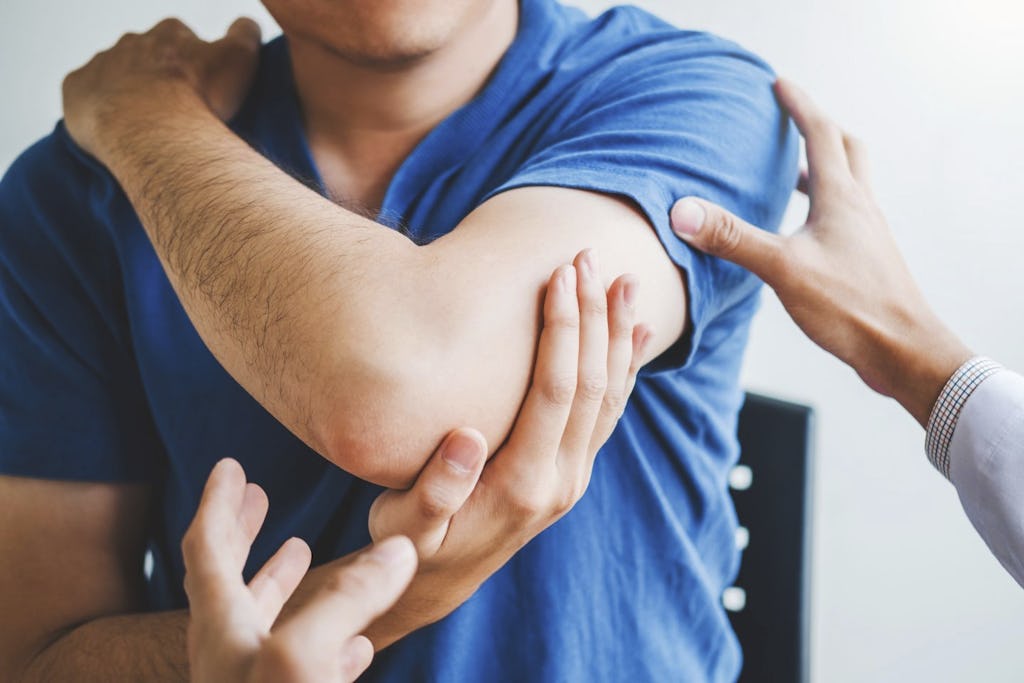Kick Pain Management Drugs to the Curb Today!
The world we live in today is heavily medicated. Go to any grocery store or pharmacy and you'll find countless over-the-counter drugs. Doctors also consistently prescribe more extreme pain relievers, including opioids that have been widely abused over the years. Drug abuse is everywhere, and it is an ongoing battle that patients are constantly fighting.
If you've ever experienced an injury, you know it can turn your everyday life upside down. If it's a car accident, a sports-related injury, a workplace injury, or even an unintentional fall, the pain from a sudden injury can make you feel helpless. To fight this, many people resort to pain-relieving medications, such as opioids. However, what many people don't know is how much more damage these drugs do to their body than they realize.
If you're struggling with chronic pain but don't want to pump your body full of addictive drugs, you'll be delighted to discover a better, safer alternative: physical therapy. Physical therapy is a natural and effective approach to chronic pain that can make you feel better in the long-term. Let's look at how this kind of natural treatment will boost your quality of life!
You can choose the natural path to pain relief!
Your physical therapist is going to show you what to do but they don't have to do all the work! In order for physical therapy to be effective for you, you have to make an effort.
Our physical therapists here will take the time to teach you about your pain and the value of maintaining your stretches and workouts at home for long-term relief.
However, at the end of the day, you make the decision to completely partake in your journey to get rid of pain!
How can a physical therapist help relieve my pain?
Because everybody is different, and the pain levels of everyone are different, physical therapy procedures must be as well! Depending on your particular condition, your physical therapy pain treatment strategy may be different from anyone else's.
Your doctor might decide to use massage therapy, heat, ice, ultrasound, or other therapies to relieve your pain and speed up the healing process if you are dealing with pain from a recent injury.
If you are able to get up and exercise comfortably, a physical therapist will recommend simple stretching, walking, swimming, or cycling to assist with the mobilization process.
These kinds of physical therapy are excellent for helping to restore mobility to soft tissues, allowing them to function more freely and comfortably. They are also excellent at keeping arthritic joints mobile and lubricated.
Strengthening exercises can repair and rehabilitate weakened muscles to avoid causing pain. Physical therapy often includes certain exercises to help strengthen your posture, balance, and gait.
Why YOU should choose physical therapy
If you keep up with the news on a daily basis, you’ve most likely heard about the dangers of opioids. These narcotics, which include both illegal drugs and prescription medication, are the cause for at least 115 overdose deaths in America every single day.
The APTA states that clinicians “[…] should consider opioid therapy only if expected benefits for both pain and function are anticipated to outweigh risks to the patient." Opioids are extremely powerful and can interact with other drugs in a dangerous way. They also lead to abuse and addiction as well.
Steroids are another dangerous class of prescription medication, and pose many risks and dangers to your health. Epidural steroid injections are used to relieve pain, but can cause arthritis in the hips, cataracts, stomach ulcers, elevated blood sugar, and nerve damage stemming from the injection itself.
Even ordinary NSAIDs such as ibuprofen are capable of causing liver problems and bleeding in the stomach, which is worrisome, because many people who don’t even have chronic injuries use these daily.
Physical therapy can prevent you from having to deal with all of these unpleasant side effects. Some cases of severe discomfort might still require you to take medication, but physical therapy helps plenty of patients decrease -- or even eliminate -- their dependence on pain medication.
Our physical therapists will use a combination of treatment techniques to help get your pain condition under control, no matter if it’s from an acute injury, or a wound from a recent surgery.
Physical therapy is a good option for you especially if you’re looking for ongoing chronic pain management that doesn’t include constant drug usage, or if you’re already on other essential medications and you’re worried about how they will interact with your pain meds.
Ready to get started?
It should be clear now that opioids and over-the-counter medications are not the only choice for pain relief.
There are a variety of treatment services available to you via physical therapy. Our therapists are here, waiting for your call!
Contact Washington Physical Therapy and Rehabilitation today to learn more about our natural options and get back to a drug-free, pain-free lifestyle.

